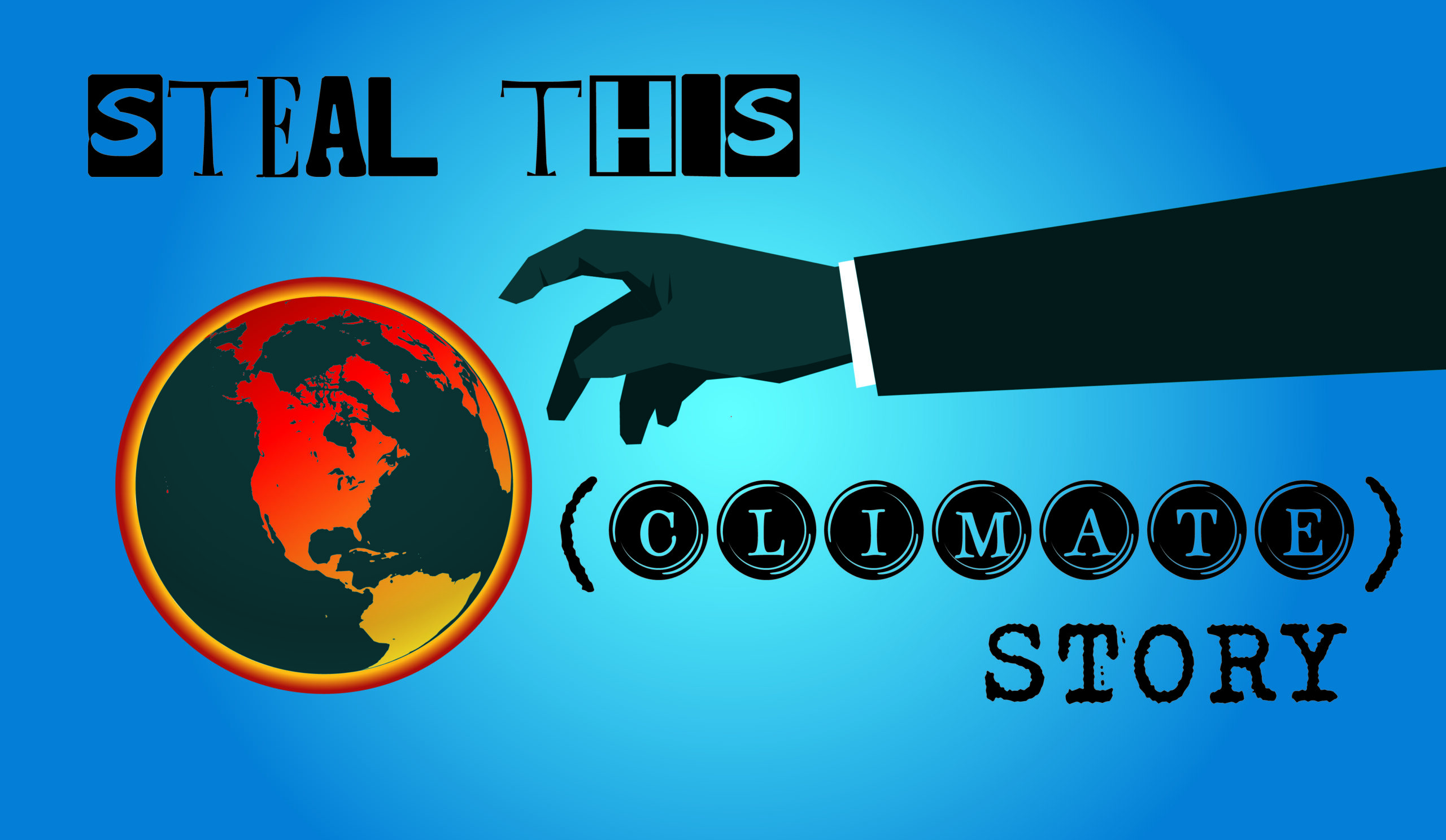Steal This (Climate) Story
It’s Payback Time
New studies call for reparations from oil companies and governments responsible for climate change.

Until now the fossil fuel industries have not had to account for the full costs to society of their products. Billions of dollars in climate-related expenses have been hidden inside the budgets for disaster recovery, health programs, national security and numerous other accounting sleights of hand that shield the rippling financial impacts of climate change from the press and the public.
But as the climate crisis intensifies, new studies are lifting the lid on the industry’s free pass, and revealing just how much society spends to keep fossil fuels flowing and responding to greenhouse-gas triggered extremes. One of them recently suggested the tab would be $70 trillion, or more than double the U.S. national debt.
Join our email list to get the stories that mainstream news is overlooking.
Sign up for Capital & Main’s newsletter.
That assessment appears in the peer-reviewed journal OneEarth, by Marco Grasso, a professor at the University of Milan, Italy, and Richard Heede, principal investigator for the Climate Accountability Institute. The authors call for “reparations” to those harmed by climate change. The money would go to public authorities who are often the first responders to the vast and expensive damage from petrochemical products. People no longer able to earn a livelihood from land degraded by droughts, floods or both could also be compensated, many of whom bear little responsibility for the emissions and have few resources with which to respond to their destructive impacts.
The call for “reparations” was backed up by a Climate Accountability Institute survey of 738 global economists, who assessed past patterns of climate-related expenditures and proposed $70 trillion as the figure that most closely approximates the coming costs from climate change through 2050.
The team started the clock on liability for climate pollution in 1988, the year that NASA scientist James Hansen testified to Congress about the human contribution to CO2 levels in the atmosphere, and the year that the U.N. created the Intergovernmental Panel on Climate Change, the global scientific body that has produced alarming assessments on the dangers of greenhouse gas emissions ever since. In 1988 the dangers from climate change were made clear, and the disinformation campaigns from the biggest oil companies began in earnest, and thus it’s the time, assert the authors, when the clock started ticking on liability for the damages.
They divided the $70 trillion figure among the three entities considered most responsible for climate damages: the world’s 21 top fossil fuel companies; the governments that permitted their pollution to continue; and the consumers who bought the fossil fuels. Each is liable for one-third of the damage. For each of the 21 companies listed as the world’s biggest emitters, they offer a detailed plan for payback between 2025 and 2050. Four of the companies are American, including ExxonMobil, which is assigned reparations over 25 years amounting to $478 billion. Similarly, based on their emissions since 1988, $330 billion is assigned to Chevron; $285 billion to Peabody Energy; and $208 billion to ConocoPhillips, to be paid down annually over the coming 25 years.
They also clarify that the payoff schedule for the companies would be doable, citing the enormous profits of the industry — $2.8 billion per day since 1970. They assert, for example, that ExxonMobil’s third quarter profit alone last year of $19.7 billion would be less than its yearly reparation payment of $18.4 billion.
The authors concede that the details as to how the payments would be collected and who would divvy them up are yet to be worked out. The U.S. government, as one of those that took decades before acting to aggressively slow greenhouse gas pollution, might both contribute to and receive from whatever fund is created. But the aim, say the authors, is to “lead to a fairer distribution of the burden of fighting climate change,” and direct the funds to mitigate emissions, fund adaptation and provide compensation to the victims harmed by climate extremes.
There would also be significant equity considerations if the price of fuel was to rise to reflect the annual payments. But the reparations proposal represents a groundbreaking opening foray in identifying, as precisely as possible, the ways in which the fossil fuel companies can be held financially accountable for the immense costs to society of their primary products as they report year after year of record profits.
The estimates are global, but if even, say, 20% of the global funds generated by the scheme went to fund additional climate action in the United States, that would account for a significant chunk of the $165 billion that the National Oceanic and Atmospheric Administration (NOAA) estimates was the cost to the federal government last year of responding to extreme weather disasters triggered by the climate crisis. Those costs are predicted to rise each year in the coming two decades. Nor does that figure include the billions more required for adapting to the public health threats posed by climate change, or the massive payouts of the federally supported crop insurance system, or the multifarious implications of climate chaos that are only expected to rise in the coming years. The financial burden of such costs are, at this stage, covered by U.S. taxpayers.
Every one of the U.S. companies listed, as well as numerous others in the petrochemical infrastructure, has refineries located in the United States, not to mention gas stations scattered across the land. There are abundant stories to be done in assessing the gap between taxes paid, costs from climate chaos (the precision of the attribution sciences continues to advance by leaps and bounds) and the public services required to respond.
While the chances of implementing such a mechanism are slight — even the authors call it a “trial balloon” — just using that powerful term “reparation” offers a glimpse into the costs to public treasuries now being borne by taxpayers in this country and in other major greenhouse gas emitters. Most climate costs are hidden in the multiple trap doors of the economy, which shunts the burden of consequences from the manufacturer to the public, known in econo-speak as externalized costs. Much like the rising debate over reparations to Black Americans for slavery, raising the prospect of compensation lifts the lid on the ways in which the status quo hides the real financial and other consequences of climate change.
Bite-Size Climate Accounting
The numbers being proposed are huge enough to be abstract. But some bite-size accounting is underway that helps to put those liability figures into recognizable chunks. In New York, a bill now making its way through the state Legislature would begin collecting money from companies determined to be responsible for the bulk of greenhouse gas pollution. The bill, which would create the country’s first Climate Change Superfund, would require companies responsible for emitting 1 billion tons or more of greenhouse gases between 2000 and 2018 to pay, collectively, about $3 billion yearly over the next 25 years to account for the monumental costs of climate disruptions in New York state. Advocates estimate those costs could reach more than $10 billion annually by 2050. (The Army Corps of Engineers has said it would cost $52 billion alone to build mobile sea barriers to protect New York Harbor from storm surges from the sea and the two rivers flowing into New York City.)
And how about fires? A study by the Union of Concerned Scientists identified the ways in which climate change was exacerbating what’s known as “atmospheric thirst,” the relative lack of moisture in the atmosphere that translates into drought and dry conditions that are ideal for triggering and sustaining wildfires. They concluded that over the past 35 years, more than a third — 37% — of the acreage burned in the Western states is directly attributable to the accumulation of greenhouse gases from the combined emissions of oil and cement companies, which thus bear direct responsibility for the painful and expensive tasks of rebuilding and relocating impacted families.
Or, to take another bite-size glimpse into how taxpayers pay for the ricocheting impacts of emissions from fossil fuel companies, how about airplanes, of the private variety? The insular and privileged realm of private air travel provides a revealing glimpse into how private climate costs and consequences are offloaded onto the public ledger.
According to this report from the Institute for Policy Studies, co-authored with Patriotic Millionaires, a group of wealthy activists that challenge economic inequality, private jets account for roughly one of every six takeoffs or landings from public airports. But the passengers on those planes pay nothing close to what the rest of us pay to support the operations of airports and air traffic control — i.e., what makes it possible for everyone to fly safely. The 99% of us traveling commercial generally pay a 7% or 8% tax to support such operations, plus a “passenger facility charge” — i.e., a keep-the-airports-functioning charge — of around 4 bucks (you can see those charges on your ticket). Private plane passengers, who need not buy tickets to fly on planes they own or lease, pay nothing comparable to maintain these or other aviation-related services.
If such charges had been applied, the some $18.6 billion that the FAA proposed spending in its 2023 budget request to ensure a safe and well-functioning aviation system could be borne at least partly by the greenhouse gas-intensive private aviation industry. There are about 14,000 private jets licensed in the United States, taking off from airports across the country; each one of them contains a story about the public costs required to keep them aloft.
(Nor do any of us in the United States, traveling commercial or private, pay for the climate impact of aviation, which accounts for close to 4% of all greenhouse gas emissions worldwide. Last month, European climate groups protested at a private air show in Geneva, where they blocked entry to an exhibition of jets for sale to private buyers to protest the planes’ disproportionately high greenhouse gas emissions.)
Each one of these examples can be broken up into many bite-size stories on the innumerable ways in which the government bears the costs while the fossil fuel industry reaps the profits of the deeply destabilizing impacts of climate change. And perhaps put a different frame on the tangled “debt ceiling” negotiations along the way.
Copyright 2023 Capital & Main

-

 Latest NewsDecember 8, 2025
Latest NewsDecember 8, 2025This L.A. Museum Is Standing Up to Trump’s Whitewashing, Vowing to ‘Scrub Nothing’
-

 Latest NewsDecember 10, 2025
Latest NewsDecember 10, 2025Capital & Main, L.A. Times Win Sidney Award for Reporting on Child Farmworkers
-

 StrandedDecember 9, 2025
StrandedDecember 9, 2025Giving Up on the Dream: Asylum Seekers Try Other Options in Mexico
-

 Locked OutDecember 16, 2025
Locked OutDecember 16, 2025This Big L.A. Landlord Turned Away People Seeking Section 8 Housing
-

 Column - California UncoveredDecember 12, 2025
Column - California UncoveredDecember 12, 2025They Power the U.S. Economy, But Will Struggle to Afford Health Care
-

 Column - State of InequalityDecember 11, 2025
Column - State of InequalityDecember 11, 2025A Little Place Called Home?
-

 The SlickDecember 19, 2025
The SlickDecember 19, 2025‘The Poor Are in a Very Bad State’: Climate Change Accelerates California’s Cost-of-Living Crisis
-

 Locked OutDecember 23, 2025
Locked OutDecember 23, 2025Section 8 Housing Assistance in Jeopardy From Proposed Cuts and Restrictions




















